In the bustling world of food service and culinary innovation, the humble sandwich press has quietly emerged as a game-changer. This unassuming kitchen gadget has transcended its origins as a simple appliance, evolving into a cornerstone of modern food production. Its versatility, efficiency, and ability to deliver consistent, high-quality results have made it an indispensable tool in restaurants, bakeries, and even home kitchens. Today, we delve into the fascinating journey of the sandwich press, exploring its impact on the global market, the cutting-edge technology driving its evolution, and the crucial role of manufacturers in shaping this dynamic industry.
Introduction to Sandwich Press Machines
Sandwich press machines have become an essential tool in the culinary world, providing both professional chefs and home cooks with the ability to create perfectly grilled sandwiches, burgers, and other delectable treats. These versatile appliances use pressure and heat to seal in flavors, ensuring that every bite is mouthwatering and evenly cooked. From humble beginnings in the early 20th century to the sophisticated gadgets of today, the evolution of the sandwich press has been nothing short of remarkable.
At its core, a sandwich press is a simple yet effective device that consists of two flat plates, typically made of cast iron or stainless steel, which are heated to a precise temperature. When the top plate is closed, it exerts pressure on the sandwich, locking in the heat and juices, and resulting in a deliciously crispy exterior and tender interior. The design of these presses can vary, but they all share the common goal of producing a perfectly golden-brown sandwich every time.
Early sandwich presses were often quite basic, with a flat plate on top that simply heated up. However, as the demand for better quality and more efficient machines grew, manufacturers started to innovate. They introduced features like adjustable heat settings, non-stick surfaces, and removable plates for easy cleaning. Today, sandwich presses come in various sizes and styles, catering to different cooking needs and preferences.
One of the most notable advancements in sandwich press technology is the ability to customize cooking times and temperatures. Professional chefs can now adjust these settings to accommodate a wide range of ingredients and desired outcomes. For example, a thick, juicy burger might require a higher temperature and longer cooking time compared to a delicate BLT.
For home cooks, the ease of use is a major draw. Sandwich presses are not only convenient but also incredibly user-friendly. Many models come with clear instructions and intuitive controls, making it easy for anyone to achieve restaurant-quality results without leaving the comfort of their own kitchen. Additionally, the compact size of most sandwich presses means they can be easily stored away when not in use, saving counter space and preventing clutter.
The sandwich press market has also seen the rise of specialty presses designed for specific types of food. For instance, some models are specifically engineered to make panini, while others excel at creating pressed burgers or even pita sandwiches. These specialized presses often come with unique features, such as a grid pattern on the bottom plate for extra crunch or a steam vent to help cook vegetables and meats to perfection.
In the commercial kitchen, sandwich presses play a vital role in the efficient production of sandwiches, burgers, and wraps. They can significantly reduce cooking times and improve the consistency of each batch. For manufacturers of fast-food and casual dining establishments, a reliable sandwich press can be the difference between a satisfied customer and a missed sale.
When it comes to choosing a sandwich press, the variety of options available can be overwhelming. However, there are a few key factors to consider. First, the material of the press can greatly affect its durability and ease of cleaning. Cast iron, for example, is renowned for its heat retention but requires regular maintenance. On the other hand, stainless steel is more resistant to rust and corrosion, making it a popular choice for professional kitchens.
Another important consideration is the heat distribution. A good sandwich press should have even heat distribution to ensure that the entire sandwich is cooked to perfection. Some models include a thermostat that monitors and maintains the ideal cooking temperature, preventing undercooking or burning.
Safety is also a critical factor. Many modern sandwich presses come with cool-touch handles and automatic shut-off features to prevent accidental burns and fires. These safety features are particularly important in busy commercial kitchens where quick service can sometimes lead to mistakes.
The global market for sandwich press manufacturers is vast, with companies from all corners of the world vying for market share. As the demand for high-quality, efficient cooking equipment continues to grow, so too does the competition. This competition has led to the development of some truly innovative products that push the boundaries of what a sandwich press can do.
In conclusion, the sandwich press has come a long way since its inception. From the humble beginnings of a simple heated plate to the sophisticated devices of today, this appliance has become an indispensable tool for anyone who enjoys making and eating delicious sandwiches. Whether for personal use or professional kitchen applications, the right sandwich press can make all the difference in the taste and presentation of your favorite sandwich creations.
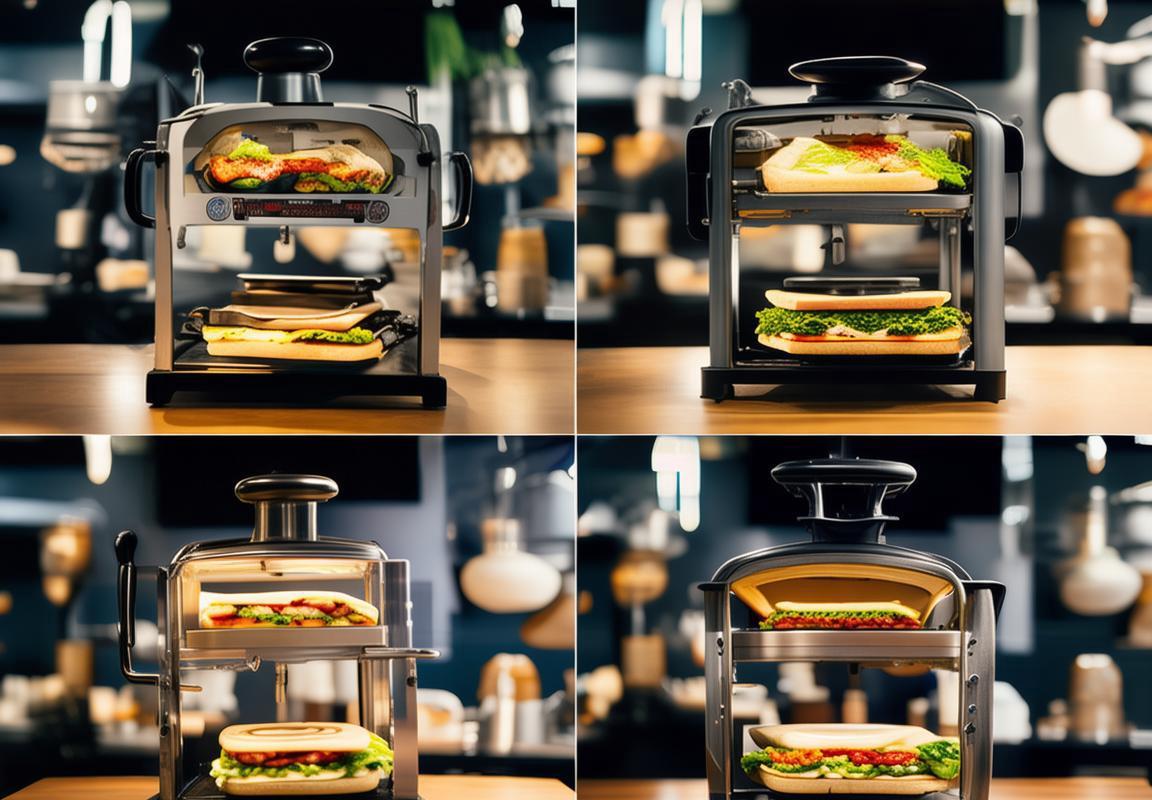
The Rise of the Sandwich Press Industry
The sandwich press industry has experienced a remarkable surge in popularity, transforming from a niche market to a cornerstone of the foodservice sector. This upward trajectory can be attributed to several key factors that have converged to create a perfect storm for growth.
-
The Convenience CultureIn today’s fast-paced world, convenience is king. People are increasingly seeking quick, yet satisfying meals that can be consumed on the go. Sandwich presses have become a staple in cafes, delis, and fast-food chains, allowing for the creation of freshly made sandwiches in mere minutes.
-
The Versatility of SandwichesSandwiches are not just limited to the classic ham and cheese. The versatility of this dish has expanded to include a variety of fillings, from gourmet ingredients to healthier options. This evolution has made sandwiches a go-to choice for diverse dietary preferences, fueling the demand for efficient sandwich-making equipment.
-
Technological AdvancementsOver the years, sandwich press technology has seen significant advancements. Modern presses are designed with ease of use in mind, featuring adjustable heat settings, non-stick surfaces, and compact designs that fit seamlessly into commercial kitchens. These improvements have made sandwich presses more appealing to both chefs and business owners.
-
The Rise of Health-Conscious EatingWith a growing awareness of health and wellness, consumers are gravitating towards nutritious and wholesome food options. Sandwich presses have enabled chefs to offer a variety of sandwiches made with fresh, whole-grain breads and healthy fillings, catering to the demands of the health-conscious market.
-
Globalization of Food TrendsAs culinary trends spread across the globe, the sandwich has become a universal favorite. From the classic American grilled cheese to the exotic Japanese gyros, the sandwich press has become an essential tool for restaurants looking to embrace international flavors.
-
Increased Restaurant CompetitionThe competition among restaurants has never been fiercer. To stand out, establishments must offer unique and high-quality menu items. Sandwich presses have become a way for restaurants to differentiate themselves by providing a unique dining experience that focuses on freshly prepared sandwiches.
-
The Convenience Store RevolutionConvenience stores have seen a surge in popularity, and they often rely on sandwich presses to offer quick, on-the-go meals. With the convenience store market expanding, so does the need for sandwich presses to keep up with the demand for grab-and-go sandwiches.
-
The Rise of Mobile Food TrucksMobile food trucks have become a popular trend, and they often feature sandwich presses to cook up a variety of sandwiches on the spot. The portability and efficiency of these machines make them ideal for street food vendors looking to offer a variety of sandwiches to their customers.
-
The Impact of Social MediaSocial media has played a significant role in the growth of the sandwich press industry. Chefs and food enthusiasts share their sandwich creations online, often featuring the sandwich press as a key tool in their culinary process. This exposure has generated interest and demand for high-quality sandwich presses.
-
The Expansion of International MarketsAs global markets open up, the demand for sandwich presses has followed suit. International restaurants and foodservice operators are looking to incorporate this technology into their menus, leading to increased sales and growth for sandwich press manufacturers.
The rise of the sandwich press industry is a testament to the power of innovation, convenience, and consumer demand. As the industry continues to evolve, it’s clear that the sandwich press will remain a vital component in the foodservice landscape, shaping the way we think about and enjoy sandwiches for years to come.
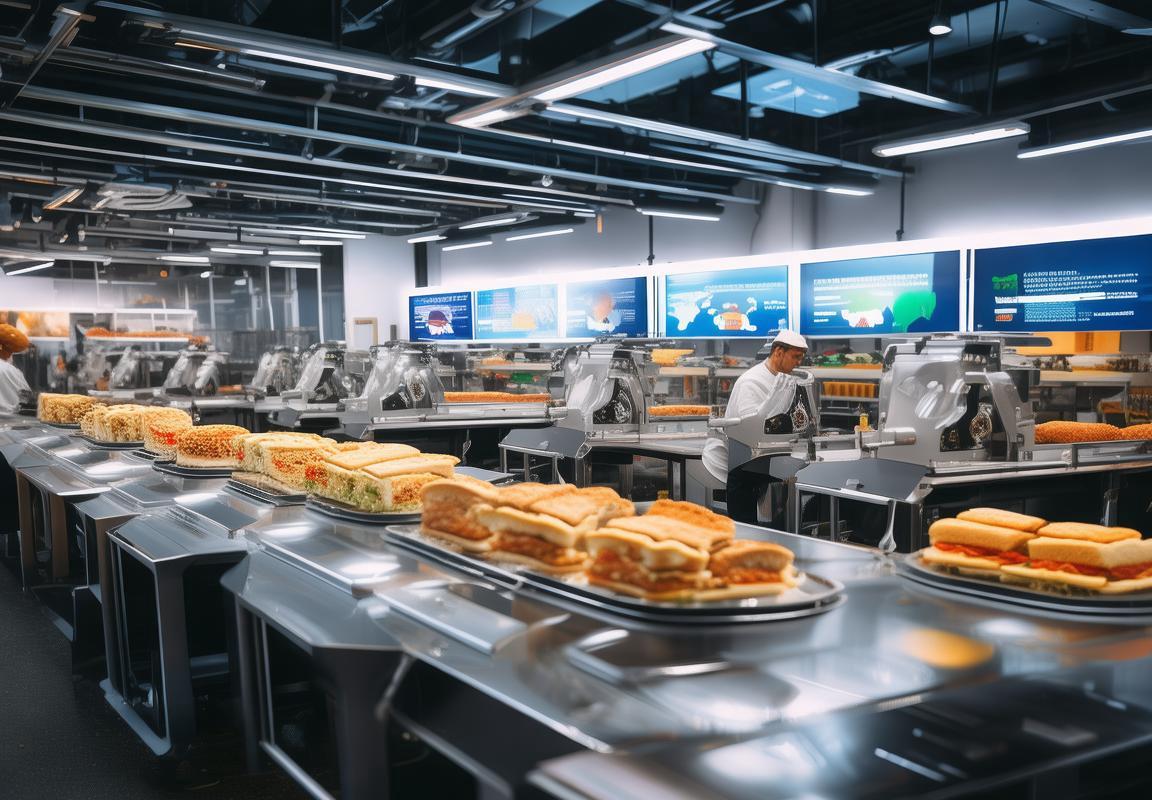
Key Features of a High-Quality Sandwich Press Machine
In the world of foodservice and commercial cooking, the sandwich press machine has emerged as a staple in the quest for efficiency and consistency. A high-quality sandwich press is not just a tool; it’s an investment in the quality of your product. Let’s delve into the key features that make these machines stand out.
The first feature that any discerning buyer should look for is the build quality. A robust frame ensures that the machine can withstand the rigors of daily use in busy kitchens. High-grade stainless steel is often used for the body, which not only adds to the durability but also contributes to the hygiene of the cooking process.
Precision engineering is another crucial aspect. The press mechanism should be designed to exert even pressure across the sandwich, ensuring that each layer is cooked to perfection. Look for machines with adjustable pressure controls, allowing chefs to tailor the cooking intensity to different types of bread and fillings.
Efficiency is a hallmark of a high-quality sandwich press. Modern models are equipped with rapid heating elements that can quickly reach and maintain the desired cooking temperature. This not only reduces the wait time for customers but also conserves energy in the long run.
The design of the heating elements is also important. Convection heating is preferred over direct heat as it promotes even cooking and reduces the risk of burning the exterior while leaving the interior undercooked. Some advanced models even feature non-stick surfaces, which make it easier to release the sandwich without sticking and ensure a cleaner cooking environment.
Ease of use is a feature that should not be overlooked. A user-friendly interface with clear controls and a simple on/off switch is essential. Some presses come with additional features like timers and temperature indicators, which provide the operator with complete control over the cooking process.
Safety features are paramount in any kitchen equipment. A high-quality sandwich press will have an automatic shut-off feature that activates if the machine is left unattended or if it detects a malfunction. This not only prevents potential hazards but also ensures that the operator can leave the machine unattended without worry.
Cleaning and maintenance are also important considerations. The design of the press should allow for easy access to all parts, making it simple to clean. Non-porous surfaces and removable parts can significantly reduce the time and effort required to keep the machine in top condition.
Another key feature is the size and capacity of the sandwich press. Commercial models come in various sizes, from small countertop models to larger units that can handle multiple sandwiches at once. The capacity should match the needs of your kitchen, whether you’re serving a small café or a bustling diner.
In terms of versatility, a high-quality sandwich press is not just for making sandwiches. Many models can also be used to cook wraps, paninis, and other grilled items. This flexibility can add to the variety of menu options available to your customers.
Lastly, the brand reputation and warranty should be taken into account. A reputable manufacturer will stand behind their product with a solid warranty, offering peace of mind that any potential issues will be addressed promptly.
From build quality and precision engineering to efficiency, ease of use, safety, maintenance, size, versatility, and brand reputation, these are the key features that define a high-quality sandwich press machine. By investing in a machine with these attributes, you’re not just buying a tool; you’re investing in the quality of your food and the satisfaction of your customers.
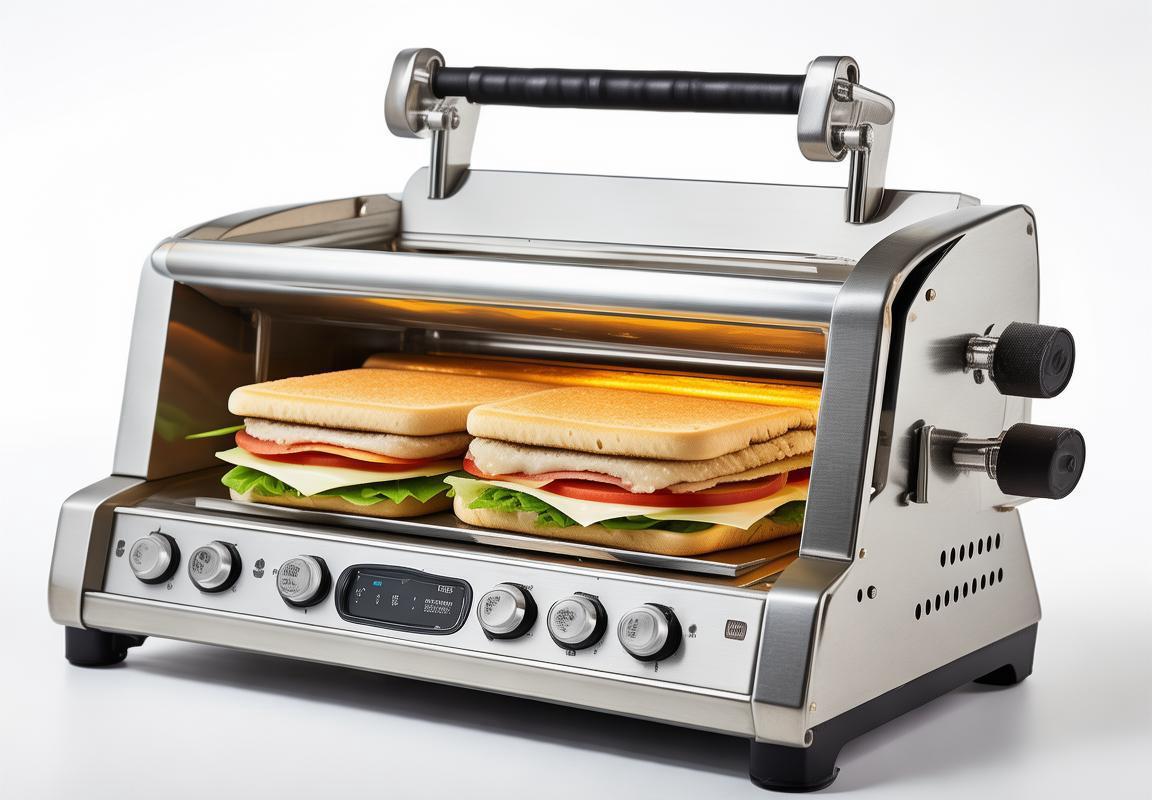
The Role of Sandwich Press Manufacturers in the Market
In the ever-evolving foodservice industry, sandwich press manufacturers play a pivotal role. Their products are not just tools but key components in the success of numerous eateries, cafes, and fast-food chains. Here’s a closer look at how these manufacturers contribute to the market:
Their machines are the backbone of sandwich production. Sandwich presses are designed to ensure consistency in the quality of sandwiches, a factor that is crucial in the fast-paced food service sector. By providing reliable equipment, manufacturers enable businesses to maintain a high level of output without compromising on the taste and texture of their products.
Manufacturers focus on efficiency. With the growing demand for quick-service options, their presses are engineered to speed up the sandwich-making process. This efficiency is not just about time-saving but also about minimizing labor costs. Businesses can serve more customers with fewer staff, making the sandwich press an essential tool for scalability.
Customization is a hallmark of modern sandwich press manufacturers. They understand that no two establishments are the same, and thus, they offer a range of machines to suit different needs. From countertop models for small cafes to industrial-sized presses for large-scale production, manufacturers cater to various capacities and space constraints. This flexibility ensures that businesses can find the perfect match for their specific requirements.
Quality materials are a staple in the production of sandwich presses. Durability is crucial, especially in environments where the equipment is subjected to heavy use. Manufacturers prioritize stainless steel and other robust materials that can withstand the test of time, reducing the need for frequent repairs and replacements.
Safety features are integral to the design of sandwich presses. With health and safety regulations becoming more stringent, manufacturers incorporate anti-lock mechanisms, adjustable pressure controls, and easy-to-clean surfaces to prevent accidents and maintain hygiene standards. This not only protects the customers but also ensures compliance with food safety protocols.
Energy efficiency is another area where sandwich press manufacturers have made significant strides. As businesses become more environmentally conscious, manufacturers are focusing on creating energy-saving models. These presses not only reduce operational costs but also contribute to a greener footprint, a selling point that resonates with eco-friendly operators.
The technology embedded in sandwich presses has seen a remarkable transformation. Modern machines often come with digital controls that allow for precise temperature settings and timers. This level of precision ensures that every sandwich is cooked to perfection, maintaining consistency across multiple batches. Manufacturers are also integrating smart features that can be remotely monitored and controlled, enhancing the operational capabilities of foodservice establishments.
Innovation is a driving force in the sandwich press industry. Manufacturers are constantly exploring new designs and functionalities to keep up with market trends and consumer demands. This could range from adjustable heat settings for different types of bread to non-stick surfaces that prevent sticking and make cleaning easier.
Customer service is a cornerstone of the relationship between sandwich press manufacturers and their clients. They offer comprehensive support, including after-sales service, maintenance tips, and training for staff. This support system is crucial for ensuring that the equipment remains operational and efficient throughout its lifespan.
In the competitive landscape of the foodservice industry, sandwich press manufacturers are instrumental in shaping the market. Their dedication to quality, efficiency, customization, and safety ensures that businesses can deliver delicious, consistent sandwiches to their customers. As the industry continues to grow, so too does the importance of these manufacturers in providing the tools that power the sandwich revolution.
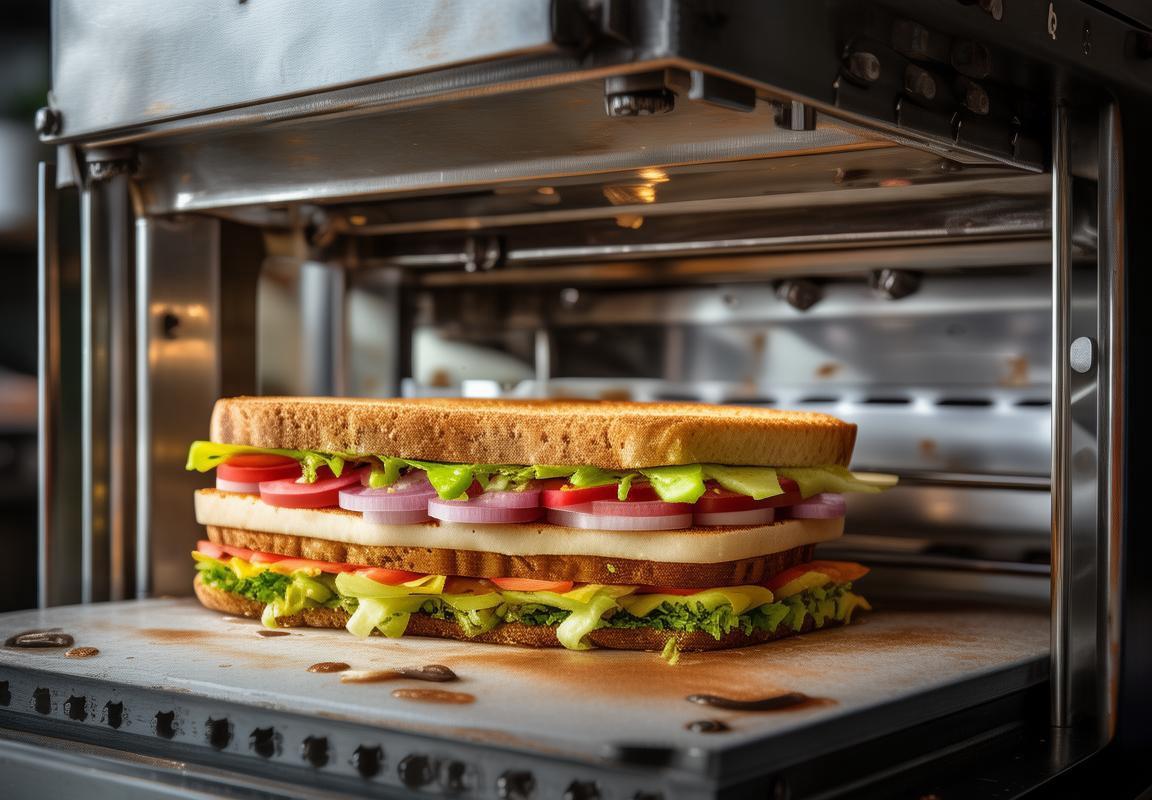
Innovations in Sandwich Press Technology
In recent years, the sandwich press industry has seen a surge in technological advancements, transforming the way these machines operate and the quality of the products they produce. Here’s a look into some of the notable innovations that have shaped the landscape of sandwich press technology:
-
Precision Engineering: Modern sandwich presses are a testament to the precision engineering that has become a hallmark of the industry. With intricate designs and high-precision components, these machines ensure uniform pressure distribution, critical for creating consistent, high-quality sandwiches.
-
Variable Temperature Control: One of the most significant innovations is the ability to control the temperature during the pressing process. This feature allows for the perfect melting of cheese, ensuring that the sandwich is not only visually appealing but also delicious. Users can now adjust the temperature to suit different types of bread and fillings, enhancing the final product’s flavor profile.
-
Automated Batching Systems: Sandwich press manufacturers have introduced automated batching systems that streamline the filling process. These systems can dispense ingredients with pinpoint accuracy, reducing human error and increasing efficiency. This innovation is particularly beneficial for high-volume commercial kitchens.
-
Non-Stick Surfaces: The development of non-stick surfaces has been a game-changer for sandwich presses. These surfaces prevent food from sticking, making cleaning easier and reducing the risk of cross-contamination. This feature is not only hygienic but also extends the lifespan of the machine by minimizing wear and tear.
-
Enhanced Safety Features: Safety has always been a priority in the design of sandwich presses, and recent innovations have taken this to new heights. Modern machines often come with features like emergency stop buttons, child locks, and automatic shut-off systems that prevent overheating. These safety mechanisms ensure that operators and customers are protected at all times.
-
Smart Control Panels: The integration of smart control panels into sandwich presses has revolutionized the user experience. These panels provide intuitive interfaces, allowing operators to easily navigate through various settings and functions. Some advanced models even offer data tracking and analytics, helping businesses monitor performance and make informed decisions.
-
Compact and Portable Designs: Innovations in sandwich press technology have also led to the creation of compact and portable machines. These are perfect for food trucks, pop-up shops, and any establishment that requires flexibility in their kitchen space. The portability of these machines doesn’t compromise on quality, offering the same precision and efficiency as larger models.
-
Energy Efficiency: With environmental concerns on the rise, sandwich press manufacturers have focused on developing energy-efficient machines. These innovations reduce power consumption without sacrificing performance, contributing to a greener and more sustainable kitchen environment.
-
Customization Options: Today’s sandwich presses offer a wide range of customization options, from different press sizes and shapes to various heating elements. This allows businesses to tailor their machines to their specific needs, ensuring that they can produce a wide variety of sandwich styles.
-
Integration with Other Kitchen Equipment: The latest sandwich presses can be integrated with other kitchen equipment, such as ovens, grills, and toasters. This integration allows for a seamless workflow, where the sandwich press can be part of a larger production line, increasing efficiency and reducing the need for manual handling.
The continuous innovation in sandwich press technology is a testament to the industry’s commitment to excellence. As these machines become more sophisticated, they not only enhance the quality of the final product but also improve the overall efficiency and safety of foodservice operations worldwide.
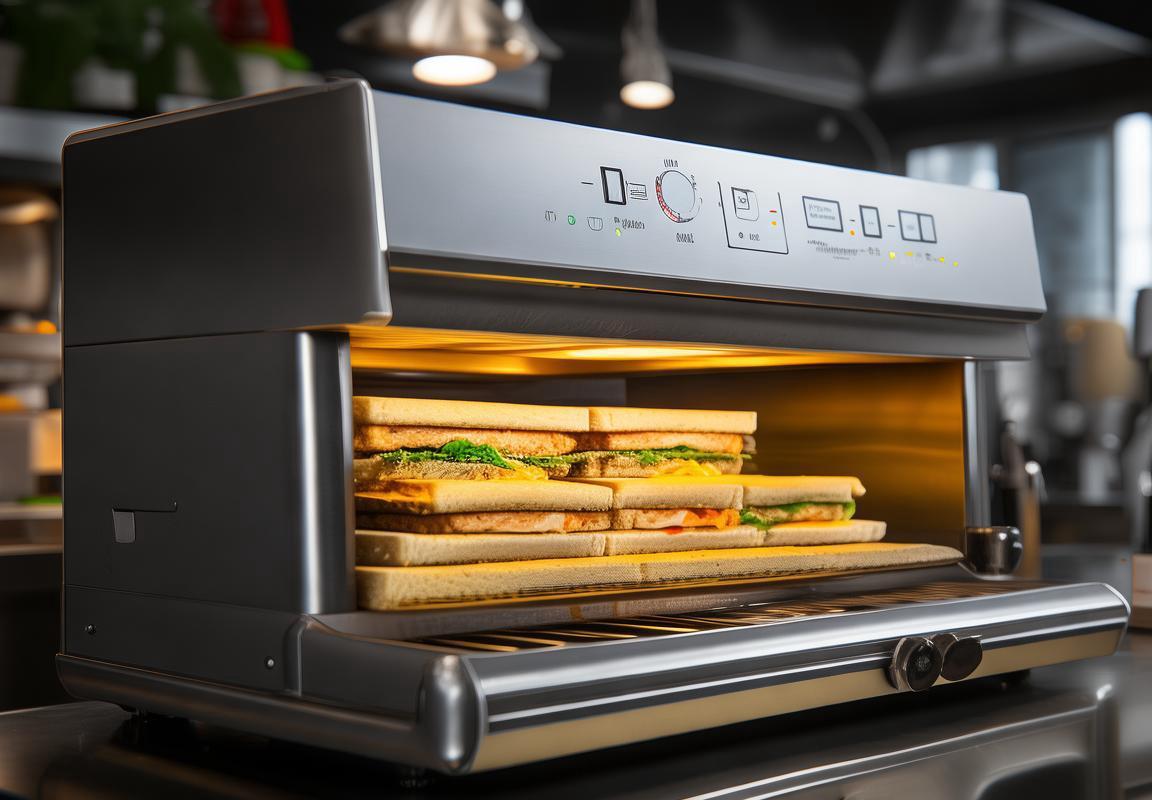
How Sandwich Presses are Revolutionizing Food Production
In the bustling world of food production, sandwich presses have quietly emerged as a game-changer. These unassuming machines have found their way into various settings, from busy kitchens to on-the-go markets, reshaping the way we consume our meals. Here’s how sandwich presses are revolutionizing food production:
The convenience and speed at which sandwich presses can assemble ingredients have transformed the landscape of fast food. With the ability to toast bread, melt cheese, and cook fillings all at once, these devices streamline the preparation process, allowing for quick service and satisfied customers.
The versatility of sandwich presses is remarkable. They’re not just limited to traditional sandwiches; they can be used to craft wraps, paninis, and even unique creations like grilled cheese or avocado toast. This adaptability has expanded the menu options for restaurants and food vendors, making them more appealing to diverse customer preferences.
The technology behind sandwich presses has advanced significantly. Modern models are equipped with features like adjustable heat settings, non-stick surfaces, and even digital controls. These advancements not only ensure consistent and even cooking but also make the machines easier to clean and maintain.
Sanwich presses have also played a pivotal role in enhancing the quality of food production. By precisely controlling the cooking time and temperature, these machines prevent overcooking, ensuring that each ingredient retains its natural flavor and texture. This level of precision is especially important in fast-paced environments where consistency is key.
The rise of healthy eating trends has been embraced by sandwich presses. As consumers seek out more nutritious options, these machines allow for the creation of customized sandwiches with fresh ingredients. From whole-grain breads to organic lettuce, sandwich presses support the demand for healthier fare.
Sanwich presses are also making their mark in the global food industry. They are compact and efficient, making them ideal for mobile food carts, food trucks, and even temporary pop-up shops. This portability means that food entrepreneurs can set up shop almost anywhere, reaching new audiences and expanding their business reach.
The environmental impact of food production is a growing concern. Sandwich presses are designed to be energy-efficient, reducing the carbon footprint associated with cooking processes. By using less energy and heat, these machines contribute to a more sustainable approach to food service.
In the realm of innovation, sandwich presses have even found a place in the tech sector. Some models now integrate with smart devices, allowing for remote control and monitoring. This integration is not just about convenience; it’s also about ensuring that the food is prepared to the highest standard, even when operators are not physically present.
The use of sandwich presses in educational settings is another testament to their impact. They are being incorporated into culinary schools and community kitchens, teaching aspiring chefs the art of sandwich preparation. This educational value extends beyond the culinary arts, as the principles of sandwich press operation can be applied to other aspects of foodservice.
Sanwich presses have also become a key component in the customization of food. With the ability to create made-to-order sandwiches on the spot, these machines empower customers to tailor their meals to their preferences. This personalization is a huge draw for consumers looking for a unique dining experience.
The evolution of sandwich presses in recent years is nothing short of remarkable. From the simplicity of classic models to the sophistication of modern, smart devices, these machines have become indispensable in the food production industry. Their ability to combine efficiency, versatility, and health-conscious options has made them a cornerstone in the ongoing revolution of how we prepare and consume food.

The Importance of Reliability and Durability in Sandwich Press Machines
In the world of foodservice, the reliability and durability of equipment are paramount. This is especially true for sandwich presses, which are the backbone of many restaurants and delis. The importance of these characteristics cannot be overstated, as they directly impact efficiency, consistency, and ultimately, customer satisfaction. Here’s why reliability and durability are so crucial in sandwich press machines:
-
Consistent Quality of OutputA sandwich press that is unreliable or not durable can lead to inconsistent results. Whether it’s a perfectly toasted sandwich or a beautifully caramelized bun, the quality of the output is directly tied to the machine’s performance. A durable press ensures that each sandwich is toasted to the same level of crispness and color, maintaining a high standard of quality that customers have come to expect.
-
Enhanced Efficiency in High-Volume OperationsIn a busy kitchen, time is of the essence. A reliable sandwich press can significantly reduce the time it takes to prepare each sandwich. Durable components that withstand constant use mean fewer breakdowns and less downtime. This efficiency is especially valuable in high-volume environments where speed is key to keeping the line moving and the customers happy.
-
Cost-Effectiveness Over TimeWhile a high-quality, durable sandwich press may have a higher upfront cost compared to a cheaper, less reliable model, the long-term savings can be substantial. A durable machine will require fewer repairs and replacements, reducing maintenance costs. This cost-effectiveness becomes even more pronounced as the machine’s lifespan extends, providing consistent service for years to come.
-
Safety and ComplianceIn the food industry, safety is paramount. A reliable sandwich press is less likely to malfunction, which can prevent accidents and ensure compliance with health and safety regulations. Durable materials and robust construction mean that the press can withstand the rigors of daily use without compromising the safety of both staff and customers.
-
Brand Reputation and Customer TrustThe reputation of a restaurant or deli is built on the quality of its food and service. A sandwich press that is consistently reliable and durable contributes to this reputation. When customers receive a high-quality sandwich that looks and tastes as good as it should, they are more likely to return and recommend the establishment to others. This trust is invaluable in maintaining a strong customer base.
-
Adaptability to Various Sandwich StylesA durable sandwich press can often be adapted to handle a variety of sandwich styles. From the thin, crispy bread of a BLT to the thick, hearty layers of a Reuben, a reliable machine can maintain the integrity of each sandwich. This adaptability ensures that chefs can experiment with different recipes without worrying about the equipment failing.
-
Maintenance and CleaningDurable sandwich presses are often easier to maintain and clean. With fewer moving parts and high-quality materials, these machines can be disassembled and cleaned efficiently, which is crucial in a kitchen where hygiene is a top priority. A machine that is easy to clean can also contribute to a cleaner overall kitchen environment.
-
Longevity and ScalabilityAs businesses grow and expand, their equipment needs to keep pace. A reliable and durable sandwich press can scale with a business, whether it’s through additional units for larger operations or the ability to handle increased demand without faltering. This longevity means that the investment in the machine can be a strategic one that grows with the company.
-
Technological IntegrationModern sandwich presses are not just about heat and pressure; they are also increasingly integrating technology. From digital temperature controls to programmable settings, these innovations rely on the reliability and durability of the machines to function effectively. A durable base ensures that these technological advancements can be relied upon day in and day out.
-
Environmental ImpactThe food industry has a significant environmental impact, and the durability of sandwich presses plays a role here too. By lasting longer and requiring fewer replacements, these machines contribute to a reduced environmental footprint. This sustainability is an increasingly important factor for both businesses and consumers.
In summary, the reliability and durability of sandwich press machines are integral to the success of foodservice operations. They ensure consistent quality, enhance efficiency, reduce costs, and maintain safety and compliance. For businesses looking to build a strong brand and keep customers satisfied, investing in a durable sandwich press is not just a smart choice—it’s a necessity.
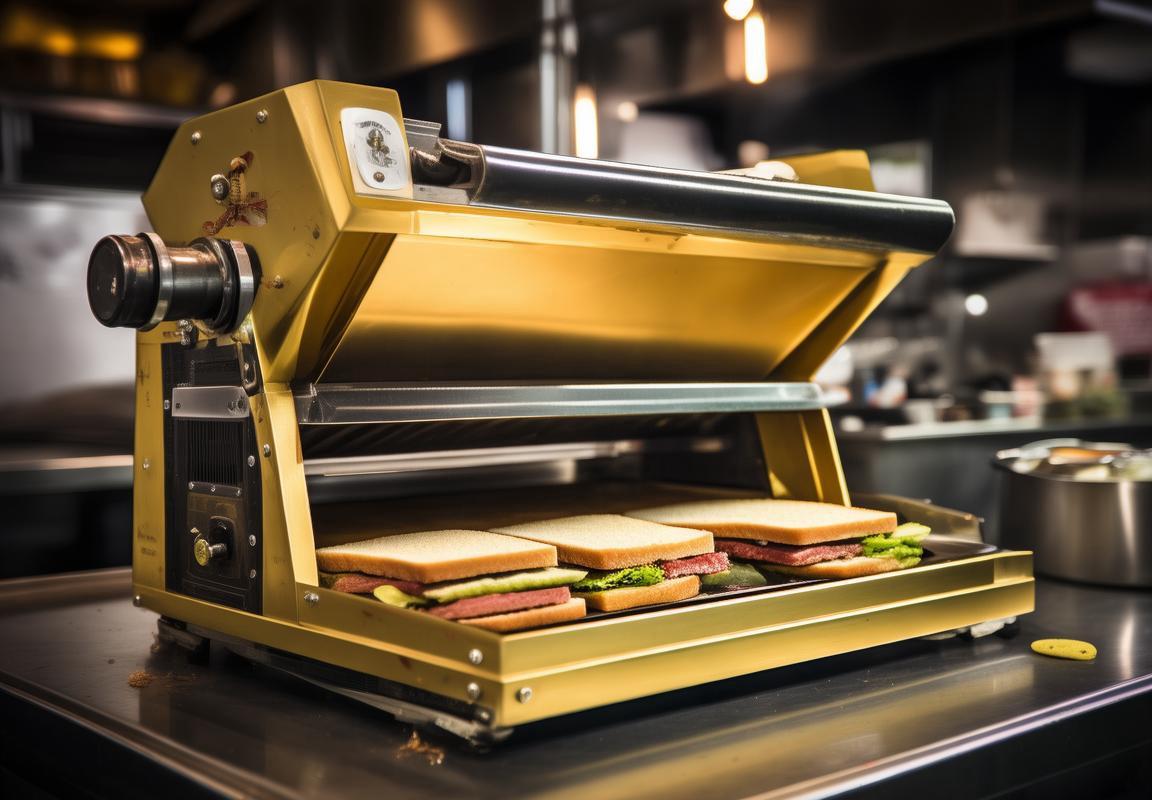
The Global Market for Sandwich Press Manufacturers
The global market for sandwich press manufacturers has seen a significant surge in recent years, driven by the increasing demand for convenient and high-quality food products. This market is characterized by a diverse range of players, each bringing unique features and innovations to the table. Here’s an overview of the key aspects shaping this dynamic market.
The expansion of the foodservice industry has been a pivotal factor in the growth of the sandwich press market. As more restaurants, cafes, and fast-food chains seek to offer quick yet satisfying meals, sandwich presses have become a staple in their kitchen equipment. The ease of use and the ability to produce consistent, appealing sandwiches at a rapid pace have made these machines indispensable.
The rise of health-conscious consumers has also played a role in the market’s expansion. As people look for healthier alternatives to traditional fast food, sandwiches, often perceived as a healthier option, have gained popularity. This shift has prompted sandwich press manufacturers to develop machines that can handle a variety of ingredients, from whole-grain breads to fresh vegetables and lean proteins.
Innovation in materials and design has been a driving force in the sandwich press market. Modern sandwich presses are not just about pressing bread; they are equipped with features that enhance the overall quality of the sandwich. Non-stick surfaces ensure easy release of the sandwich, while adjustable pressure settings allow for customized cooking to suit different types of bread and fillings.
One of the key trends in the market is the integration of technology. Smart sandwich presses are becoming increasingly popular, offering programmable settings and digital displays that allow operators to control the cooking temperature and time with precision. This technology not only ensures consistency but also reduces the need for manual adjustments, saving time and labor.
The global market for sandwich press manufacturers is also influenced by the availability of different sizes and types of presses. From countertop models suitable for small cafes to industrial-sized presses capable of handling high-volume production in large-scale foodservice operations, the variety caters to a wide range of needs. This diversity has made sandwich presses a versatile tool in various foodservice settings.
The market is further bolstered by the rise of mobile food vendors and food trucks. These entrepreneurs require compact, portable sandwich presses that can be easily transported and set up in different locations. The demand for such portable models has led to the development of lightweight, durable presses that are still capable of producing high-quality sandwiches.
Geographically, the market is spread across various regions, with North America and Europe leading the way due to their well-established foodservice industries. However, Asia Pacific is emerging as a significant market, driven by the region’s rapid urbanization and growing middle class. Countries like China, India, and Japan are showing a strong interest in sandwich presses, as they look to expand their foodservice offerings.
The importance of reliability and durability in sandwich presses cannot be overstated. In high-traffic foodservice environments, the machine must withstand constant use without failing, which is why manufacturers focus on robust construction and high-quality components. A reliable sandwich press can significantly reduce downtime and maintenance costs for businesses.
Additionally, the market is influenced by regulatory compliance and safety standards. As food safety concerns grow, sandwich press manufacturers must ensure that their products meet stringent hygiene and safety requirements. This includes the use of food-grade materials and easy-to-clean designs.
Lastly, the market for sandwich press manufacturers is shaped by the growing trend of customization. Consumers are increasingly seeking unique and personalized food experiences, and sandwich presses offer a platform for creating custom sandwiches. This has led to a demand for machines that can handle a wide array of ingredients and toppings, further fueling innovation and growth in the market.
In conclusion, the global market for sandwich press manufacturers is a testament to the evolving foodservice industry and the demand for convenience, quality, and innovation. As the market continues to grow, manufacturers must adapt to changing consumer preferences and technological advancements to stay competitive.
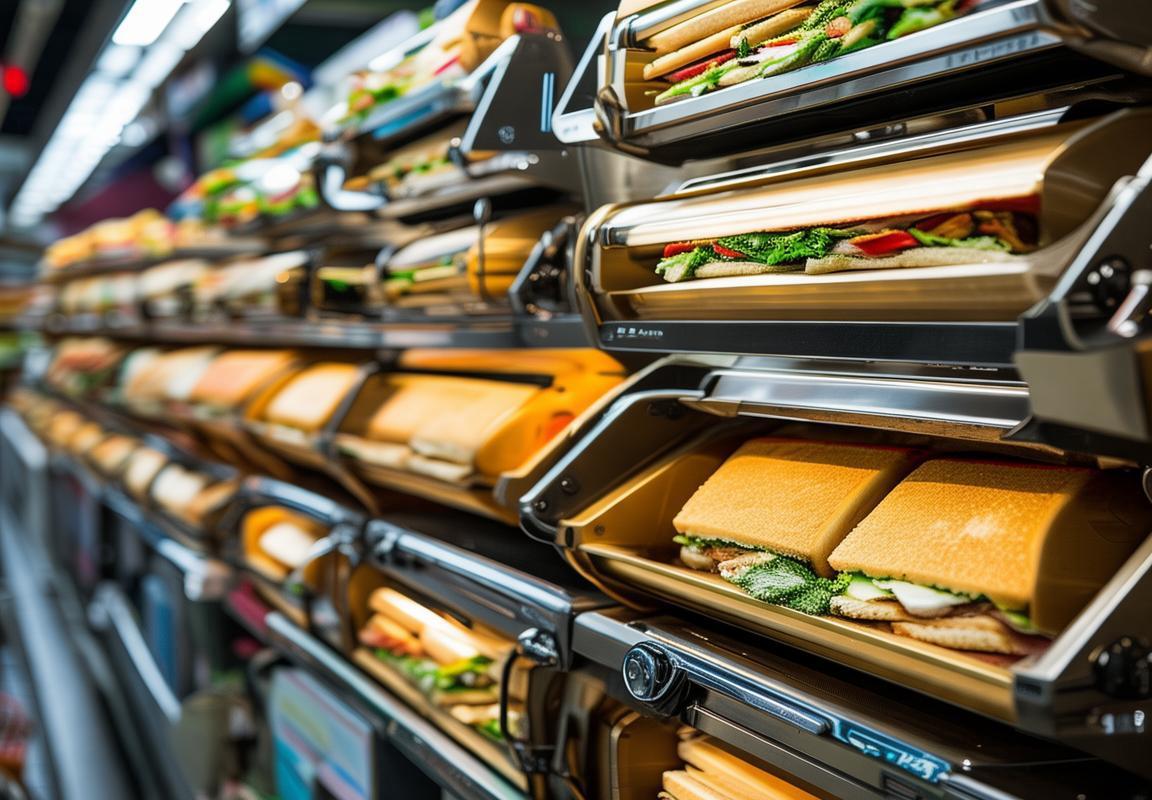
Case Studies: Success Stories with Sandwich Presses
In the bustling world of foodservice, sandwich presses have emerged as a game-changer, not just for the quality of the final product but also for the efficiency of the production process. Let’s delve into some success stories where these versatile machines have made a significant impact.
The bakery at Joe’s Deli, a local staple in the heart of downtown, was struggling to keep up with the demand for their signature pressed sandwiches. Their old, outdated equipment was not only producing inconsistent results but also taking up valuable counter space. After investing in a state-of-the-art sandwich press, the bakery noticed a remarkable transformation. The even heat distribution ensured that each sandwich was cooked to perfection, with a golden crust and a moist interior. The increased speed of the new press allowed for a faster turnaround, reducing wait times for customers and boosting overall satisfaction.
At the high-end café, The Urban Bistro, the culinary team was on a quest to elevate their menu offerings. They chose a custom-designed sandwich press that not only matched their sleek aesthetic but also delivered exceptional performance. The press’s precise temperature control allowed them to experiment with different bread types and fillings, leading to innovative new dishes that quickly became customer favorites. The consistency in the sandwiches’ texture and taste was unparalleled, solidifying their reputation as a premium dining destination.
The fast-food chain, Quick Bite, faced a common challenge: maintaining the quality of their sandwiches throughout the busy lunch rush. Their solution was to invest in a commercial-grade sandwich press that could withstand the rigors of high-volume production. The press’s robust build and easy-to-clean design made it a reliable workhorse on the line. The consistency in the sandwich’s texture and temperature meant that every customer received the same delicious experience, regardless of the time of day.
A local pizzeria, Napoli’s, was known for its authentic Italian cuisine, but their traditional method of pressing sandwiches left much to be desired. They upgraded to a modern sandwich press that offered adjustable pressure and temperature settings. This allowed them to perfect the crunchiness of the crust while ensuring the fillings stayed warm and flavorful. The press’s compact size was a bonus, freeing up valuable counter space for other kitchen essentials.
In a small town diner, The Country Kitchen, the sandwich press became a symbol of innovation. The diner, known for its homey atmosphere, replaced their old, heavy-duty press with a new, sleek model that was easy to use and maintain. The press’s ability to handle a variety of bread types and sizes was a hit with the diner’s diverse clientele. The consistent quality of the sandwiches, from the crispy exterior to the tender interior, kept customers coming back for more.
A health-conscious café, GreenEats, was looking to offer a wide range of vegan and gluten-free sandwiches. They invested in a sandwich press that could accommodate their unique dietary needs. The press’s versatility allowed them to experiment with different breads and spreads, ensuring that every sandwich met the high standards of their health-conscious patrons. The consistent quality and the ability to produce a variety of sandwiches quickly made the café a favorite among locals and visitors alike.
These success stories highlight the transformative power of the sandwich press in various settings, from small family-owned restaurants to bustling city cafes. The ability to produce high-quality, consistent sandwiches has not only improved customer satisfaction but also increased efficiency and profitability for businesses across the board. The sandwich press has truly become a cornerstone in the world of food production.
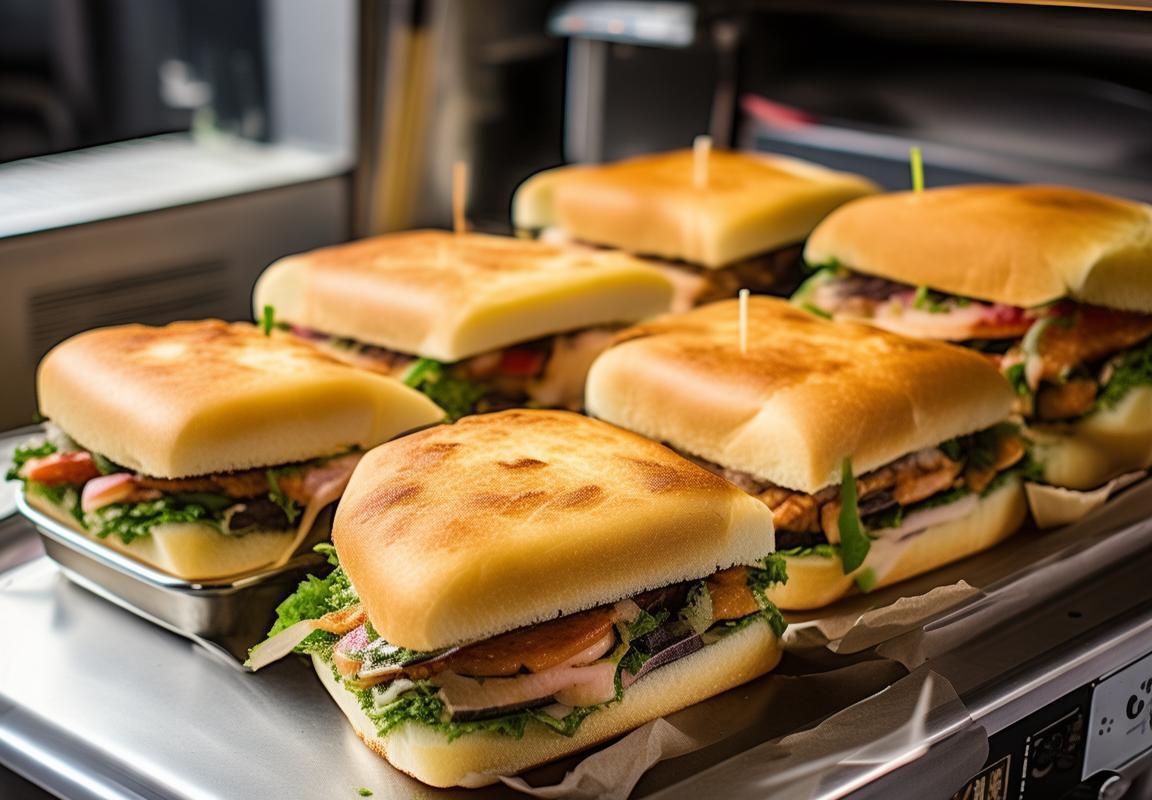
Conclusion: Why Choosing the Right Sandwich Press Manufacturer Matters
In today’s fast-paced food industry, the choice of a sandwich press manufacturer can significantly impact the success of a business. The right machine not only ensures consistent quality but also contributes to efficiency and customer satisfaction. Here are several reasons why selecting the appropriate sandwich press manufacturer is crucial:
The precision and craftsmanship of a sandwich press can be the difference between a simple meal and an exceptional dining experience. High-quality sandwich presses are designed with intricate details that ensure even heating, perfect pressing, and consistent results. A reputable manufacturer understands the importance of these features and incorporates them into their products.
Customers expect reliability from the businesses they patronize. A sandwich press that malfunctions frequently can lead to delays, wasted ingredients, and unhappy customers. When choosing a manufacturer, it’s essential to consider their reputation for producing robust and reliable machines. These are the brands that often offer longer warranties, spare parts, and customer support, making them a safer investment for any business.
Efficiency is key in the food service industry, and a high-quality sandwich press can significantly enhance productivity. Modern sandwich presses often come with features like rapid heat-up times, adjustable temperature settings, and easy-to-clean surfaces. These features can streamline the preparation process, allowing staff to focus on other tasks while ensuring that each sandwich is pressed to perfection.
The cost of a sandwich press can vary widely, but the cheapest option is not always the best. Investing in a high-quality machine from a reputable manufacturer can be more cost-effective in the long run. These presses tend to have lower maintenance costs, longer lifespans, and the potential for increased sales due to the quality of the final product.
In the competitive landscape of the food industry, branding is everything. A sandwich pressed to the right specifications can be a major selling point for a restaurant or café. A good sandwich press manufacturer not only provides a product that meets these standards but also offers branding opportunities, such as customizing the press with a company logo or name. This can enhance the overall brand image and create a memorable customer experience.
The demand for healthier eating habits has grown, and the sandwich has evolved to meet these needs. A quality sandwich press manufacturer can offer a range of models designed for different types of sandwiches, from gourmet to vegetarian and vegan options. These presses often have non-stick surfaces, which are not only easier to clean but also suitable for cooking with healthier ingredients.
As the food industry becomes more environmentally conscious, the choice of sandwich press manufacturer can also reflect a company’s commitment to sustainability. Some manufacturers use eco-friendly materials, reduce energy consumption, and offer recycling programs for their equipment. These considerations can resonate with eco-conscious consumers and differentiate a business from its competitors.
The rise of food trucks and pop-up restaurants has created a niche market for portable and compact sandwich presses. A reliable manufacturer understands the unique needs of these businesses and offers versatile options that can be easily transported and set up. This flexibility is crucial for operators looking to expand their reach or cater to different markets.
Innovation in the food service industry doesn’t stop at the kitchen. A good sandwich press manufacturer keeps up with the latest trends, such as the integration of smart technology. These advances can include touch-screen controls, programmable settings, and even connectivity to manage operations and maintenance remotely. These innovations not only improve efficiency but also provide a competitive edge.
Choosing the right sandwich press manufacturer is a strategic decision that can have far-reaching implications for a business. From the quality of the product to the level of customer service, every aspect of a manufacturer’s offerings should be carefully considered. By investing in a reputable manufacturer, businesses can ensure they have the tools they need to meet customer expectations, increase profitability, and stay ahead in a rapidly evolving market.